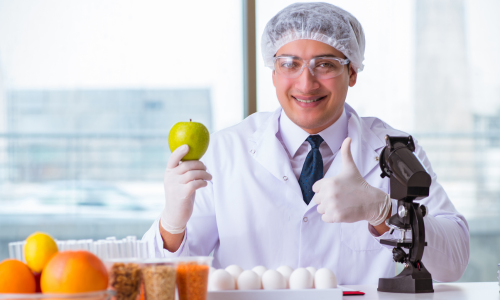
Can Food Testing Prevent Major Health Risks?
In a world where food safety is directly tied to public health, food testing has emerged as an essential tool to mitigate risks. From contamination and adulteration to nutrient analysis and shelf-life evaluation, food testing helps ensure that what we consume is safe, nutritious, and compliant with health regulations.
In this blog, we explore how food testing can help prevent major health risks and protect communities from foodborne illnesses.
1. What Is Food Testing?
Food testing refers to the scientific analysis of food products to evaluate their safety, quality, nutritional value, and compliance with regulatory standards. It involves identifying the presence of harmful contaminants like bacteria, pesticides, heavy metals, and additives.
Modern food labs perform tests such as:
- Microbiological testing
- Chemical residue testing
- Allergen testing
- Nutritional labeling
- Shelf-life studies
Food testing is not only essential for food manufacturers but also for regulatory bodies and consumers alike.
2. Why Food Testing Is Crucial for Public Health
a. Prevents Foodborne Illnesses
One of the leading causes of food-related health issues is contamination. Bacteria like Salmonella, E. coli, and Listeria can cause severe illnesses, especially in vulnerable populations like children, elderly, and immunocompromised individuals.
Proper testing helps detect these pathogens before products reach the market, reducing outbreaks of foodborne diseases.
b. Detects Adulteration and Toxins
In nations like India, food adulteration is a serious problem. To improve appearance or shelf life, contaminants like artificial coloring, preservatives, and non-edible materials are added. This poses serious health risks such as liver damage, kidney failure, and even cancer.
Through chemical testing, labs can detect these toxins and prevent their circulation in the market.
c. Ensures Nutritional Accuracy
Consumers today are more health-conscious than ever. Accurate nutritional information is vital, especially for people with dietary restrictions. Food testing validates the nutritional label, helping consumers make informed choices.
3. How Food Testing Works: The Scientific Approach
Food testing involves collecting food samples and analyzing them in certified laboratories using advanced techniques such as:
- High-Performance Liquid Chromatography (HPLC)
- Gas Chromatography (GC)
- Mass Spectrometry (MS)
- ELISA for allergen testing
- PCR for microbial DNA detection
These processes help identify minute traces of contaminants that might otherwise go unnoticed.
4. Common Contaminants Identified in Food Testing
| Type | Examples | Health Impact |
|---|---|---|
| Biological Contaminants | Bacteria, viruses, molds, parasites | Gastrointestinal infections, chronic conditions |
| Chemical Contaminants | Pesticides, veterinary drugs, heavy metals | Organ damage, cancer risks |
| Physical Contaminants | Glass, plastic, metal fragments | Physical injury, choking hazards |
| Allergens | Peanuts, gluten, milk, soy | Severe allergic reactions |
5. Food Testing in Chennai: A Growing Necessity
With increasing industrialization and food production, Chennai has seen a rising demand for reliable food testing services. Several NABL-accredited labs now offer:
- Food quality testing in Chennai
- Packaged food and raw material analysis
- Shelf-life estimation for FMCG brands
- Export-quality testing to meet international norms
Food lab testing in Chennai plays a crucial role in supporting the hospitality, retail, and manufacturing sectors by ensuring food safety.
6. How Food Testing Benefits Stakeholders
| Stakeholder | Benefits |
|---|---|
| Manufacturers | Avoid product recalls, build consumer trust, meet standards |
| Consumers | Protect health, make informed choices, reduce allergy risks |
| Regulators | Verify adherence to safety standards, control food fraud |
7. Real-Life Examples of Food Testing Preventing Disaster
Case 1: Packaged Milk Recall
In 2022, extra aflatoxins, a known carcinogen, were found in packaged milk in India during normal food testing. A possible health crisis and widespread exposure were avoided by the product's prompt recall.
Case 2: Restaurant Food Poisoning
A Chennai-based restaurant faced an outbreak of food poisoning traced back to contaminated meat. Testing revealed the presence of E. coli, which resulted in improved kitchen audits and hygiene procedures.
These instances highlight how food testing can save lives.
8. The Future of Food Safety: AI and Rapid Testing
Technological advancements are making food testing faster, more accurate, and accessible:
- Portable food analyzers for on-site testing
- AI-based contamination prediction systems
- Blockchain for supply chain transparency
- DNA barcoding to detect species substitution in meat/fish
These innovations are paving the way for proactive food safety management.
9. How to Pick a Chennai Food Testing Laboratory
When selecting a food lab testing service in Chennai, ensure:
- NABL accreditation or FSSAI approval
- Transparent reporting with quick turnaround time
- Availability of customized testing packages
- Good customer support and sample collection service
10. Final Thoughts: Prevention is Better Than Cure
Food testing is not just a regulatory formality; it's a public health necessity. In a world grappling with new health challenges every day, ensuring what we eat is free from harmful substances can save lives and reduce long-term healthcare costs.
Whether you're a food business owner, restaurant operator, or an individual consumer—food testing should be a non-negotiable priority.
8. Final Thoughts
Clean water is essential, not a luxury. Whether you rely on corporation supply, borewells, or tankers, testing and improving water quality safeguards your family’s health. With accessible labs and purifiers, every Chennai resident can take steps toward safer water.

